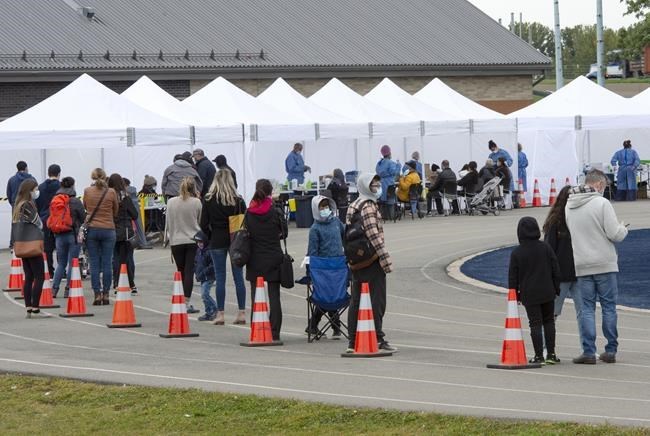Parliament's spending watchdog says relatively little of the government's new sickness benefit will go to people who have tested positive for COVID-19.
In a report Wednesday morning, the parliamentary budget officer estimates that only $50 million out of the estimated $655 million of the new sickness benefit will go to workers who have COVID-19.
The office estimates that the vast majority of spending this fiscal year and next will go to people who have to take time off for other illnesses, or because they would be at high risk if they caught COVID-19.
A separate costing note from Yves Giroux's office also estimates that the majority of spending on a new 26-week caregiving benefit will go to parents caring for children.
Giroux's report says that of the $1.4 billion estimated net cost for the leave this fiscal year and next, that over $1 billion will go to parents who need to stay home to care for children who would be at high risk if they caught COVID-19, and a further $306 million because either a child or their classmate actually has the illness.
But the reports warn that the estimates of the suite of measures replacing the Canada Emergency Response Benefit are subject to the path of the pandemic and COVID-19 case counts.
The first payments from the new benefit programs are to roll out next week to support Canadians whose incomes have crashed during the pandemic, and allow workers without sick leave through their employers to stay home and get paid should they fall ill.
They replace the broad Canada Emergency Response Benefit, which is winding down. The federal government introduced it in March as lockdowns led to historic job losses that would have overwhelmed the aging employment insurance system — whose rules would not have given much support to many of those who lost work anyway.
The most recent federal figures show that the CERB has paid out $80.62 billion in benefits to nearly 8.9 million different workers.
The Liberals extended the CERB by four weeks while Parliament was prorogued at a cost Giroux's office estimates to be $5.37 billion.
Overall, the PBO estimates the trio of new benefits replacing the CERB will cost nearly $23.5 billion this fiscal year and next. The support for affected workers, known as the Canada Recovery Benefit, costs the most: nearly $20.7 billion to provide $500 per week for up to 26 weeks.
The government is withholding 10 per cent of the costs for tax purposes at source, something that didn't happen with the taxable CERB. Instead, recipients of that relief may find themselves returning some of the money at tax time next year.
The PBO estimates government coffers could recoup $3.6 billion from CERB recipients.
The quartet of costing notes provide an independent analysis of the government's promises to continue to help workers hurt by the pandemic, and two more provide estimates of opposition party ideas to further expand income support measures and the safety net for households.
Giroux's office estimates it would cost on average $1.5 billion a year over the next five years, along with an upfront cost of $3 billion to provide dental care to uninsured Canadians with household incomes under $90,000.
His report estimates that the NDP proposal would cover 6.5 million people if it started next year. That number would fall to 6.3 million by 2025 as the population shifts and labour market conditions improve.
"Every year millions of Canadians don’t go to the dentist because they can’t afford it and, as people lose their coverage during the COVID-19 pandemic, that number is growing," said NDP health critic Don Davies, who asked for the analysis.
"More and more Canadians need this support. It’s time for the federal government to step up and deliver it."
The PBO also estimates that removing federal income taxes from Canada Pension Plan and old age security benefits for seniors would cost $268.1 million this fiscal year, and then nearly $1.1 billion in the ensuing 12 months. Giroux's office did the analysis based on a request from Conservative MP Ziad Aboultaif.



